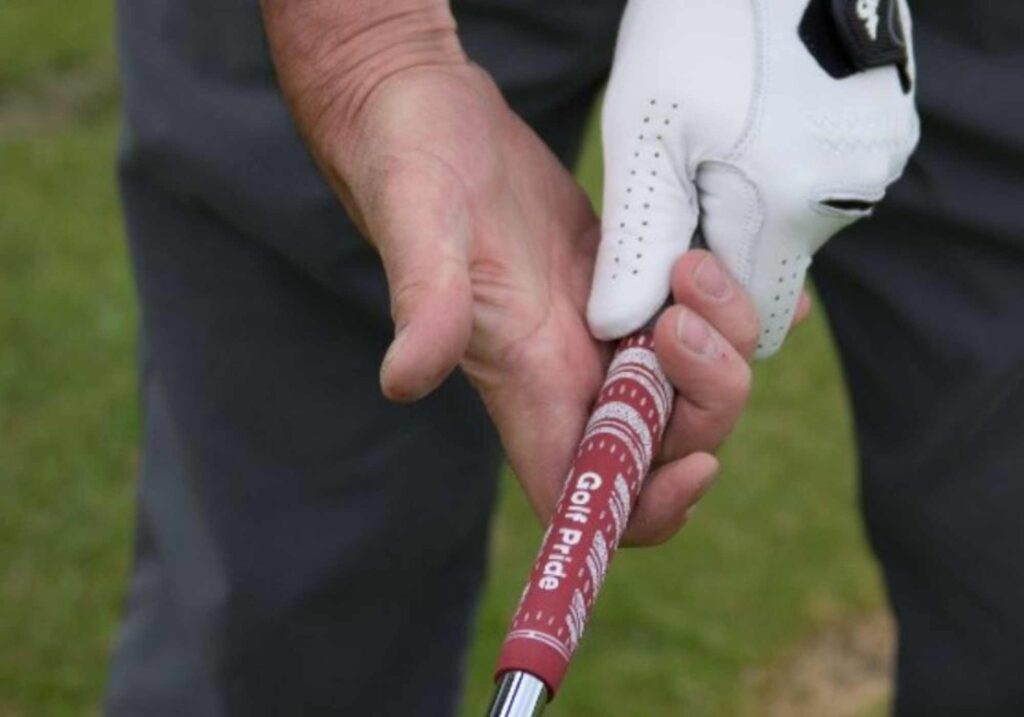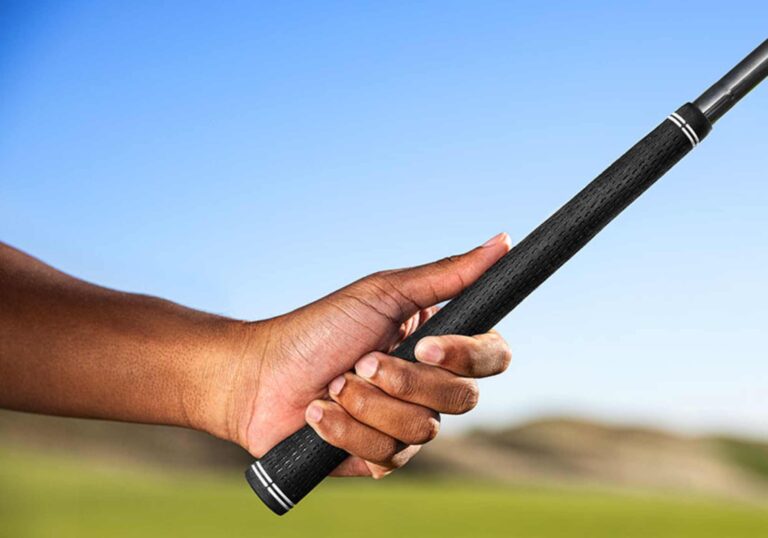Golfers spend a lot of time thinking about clubs, shafts, and balls, but the grip is the only part of the club you actually touch. The size of that grip can change the way you swing, how the clubface moves, and even the direction and consistency of your shots.
If you’ve never thought about grip size before, it might be time to give it some attention.
What is golf grip size?
Grip size refers to the diameter of the grip installed on your club. Standard grips are designed to fit the average golfer’s hand size, but not everyone has average hands. Grip sizes are usually available in:
- Undersize (smaller than standard)
- Standard
- Midsize
- Oversize (sometimes called jumbo)
You can also fine-tune grip size by adding layers of tape under the grip when it’s installed.
How grip size affects your swing
Grip size can influence how your hands and wrists work during the swing. This in turn affects clubface control, shot shape, and feel.
- A grip that is too small can encourage excessive hand and wrist action, which might lead to over-rotation of the clubface and more hooks.
- A grip that is too large can restrict hand movement, making it harder to square the clubface and possibly leading to pushes or slices.
- The right size allows your hands to work naturally without feeling cramped or restricted.
Finding your correct grip size
The most common starting point is to measure your glove size or hand length and finger length. As a quick guide:
- Small or medium glove: undersize or standard grip
- Large or extra-large glove: midsize or oversize grip
A simple test is to grip a club naturally and check your fingertips:
- If your fingertips dig into your palm, the grip is too small.
- If there’s a noticeable gap between your fingertips and palm, the grip is too big.
- Ideally, your fingertips should lightly touch the pad of your hand.
Performance effects of grip size
The wrong grip size can cause problems in more ways than one:
- Control: If the grip is too small, you may feel the club twisting in your hands at impact. If it’s too big, you may struggle to release the club through the ball.
- Comfort: A poorly sized grip can cause tension in your hands and forearms, which can lead to fatigue or even injury over time.
- Consistency: The right grip size promotes a repeatable swing and more consistent contact.
- Ball flight: Too small can lead to a right-to-left bias (for right-handed golfers), too big can lead to a left-to-right bias.

Grip size and feel
Some golfers choose a slightly larger or smaller grip than the “fitted” size based on feel alone. Larger grips can reduce hand action for players with quick releases, while smaller grips can help players who want to feel more wrist hinge or release.
It’s also worth noting that grip material, shape, and texture all play a role in feel. A midsize grip in a softer material can sometimes feel less bulky than a firmer grip of the same size.
Special considerations
- Arthritis or hand pain: Larger grips can reduce strain and make it easier to hold the club without excessive pressure.
- Wet or humid climates: A grip that’s too small can become harder to hold in slippery conditions. Larger or more textured grips can improve traction.
- Glove use: If you regularly play without a glove, grip feel and size can become even more noticeable.
How to experiment with grip size
The easiest way to test different sizes is to have a club or two regripped and compare them over several rounds or range sessions. You can also use grip build-up tape under your current grips to temporarily mimic a larger size.
If you’re unsure, start with your most-used club (often a wedge or 7-iron) so you can feel the difference without committing your whole set.
Push carts, riding carts, and grip care
No matter what size you choose, keeping grips in good condition is key. Grips can become slick from dirt, sweat, and sunscreen. A quick scrub with warm water and mild soap can restore tackiness.
If you use a push cart or ride often, make sure grips aren’t getting scuffed against the cart straps. Damaged grips can affect feel and cause inconsistent shots, regardless of size.
Final thoughts
Grip size may not be as flashy as a new driver, but it can have just as much impact on your game. The right size can improve comfort, control, and consistency, while the wrong size can quietly cause problems round after round. Testing different sizes is simple and can reveal a lot about what works best for you.
Let’s hear from you
Have you ever changed your grip size? Did it make a noticeable difference in your ball flight or comfort? Share your experience and any tips you have for finding the perfect fit.
